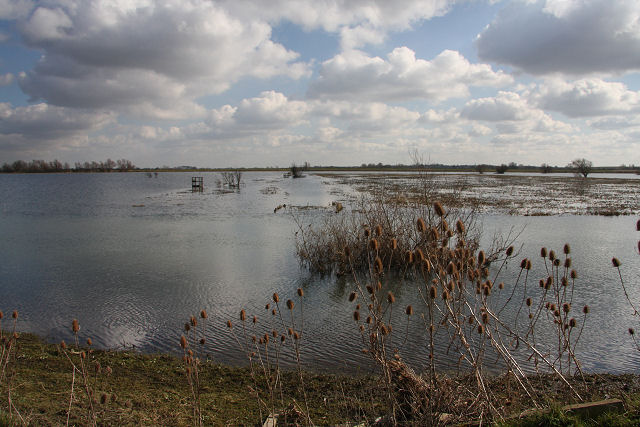|
Washland
Washland or washes are areas of land adjacent to rivers which are deliberately flooded at times when the rivers are high, to avoid flooding in residential or important agricultural areas. They often provide for overwintering wildfowl, and several include important nature reserves. Examples of washlands include: * The Ouse Washes of Cambridgeshire and Norfolk * The Nene Washes of Cambridgeshire References Landforms Flood control {{geo-term-stub ... [...More Info...] [...Related Items...] OR: [Wikipedia] [Google] [Baidu] |
Ouse Washes
Ouse Washes is a linear biological Site of Special Scientific Interest stretching from near St Ives, Cambridgeshire, St Ives in Cambridgeshire to Downham Market in Norfolk, England. It is also a Ramsar site, Ramsar internationally important wetland site, a Special Protection Area for birds, a Special Area of Conservation and a Nature Conservation Review site, Grade I. An area of between March, Cambridgeshire, March and Ely, Cambridgeshire, Ely is managed by the Wildlife Trust for Bedfordshire, Cambridgeshire and Northamptonshire and another area near Chatteris is managed by the Royal Society for the Protection of Birds. The Wildfowl & Wetlands Trust manages another area near Welney. The site lies between the Old Bedford River in the north-west and the New Bedford River in the south-east. The Washes are a flood storage area and are often under water in the winter. It is internationally significant for wintering and breeding wildfowl and waders, especially Anas crecca, teal, Ana ... [...More Info...] [...Related Items...] OR: [Wikipedia] [Google] [Baidu] |
Nene Washes
Nene Washes is a biological Site of Special Scientific Interest on the bank of the River Nene east of Peterborough in Cambridgeshire, England. It is also a Ramsar internationally important wetland site, a Special Area of Conservation, a Special Protection Area and a Nature Conservation Review site. An area of is managed by the Royal Society for the Protection of Birds. The total area of the Ramsar site is . This is described by Natural England as one of Britain's few remaining areas of washland which are vital for the survival of wildfowl and waders. It is used as a flood storage reservoir for the River Nene and is flooded for most of the winter and is pasture in the summer. It is important for birds all year. In the wintering wildfowl include wigeons, teals, pintails and Bewick's swans. In the breeding season the nesting species include common crane, black-tailed godwit, garganey and common snipe. The cranes also winter in the area and flock in nearby fields. They reserve ... [...More Info...] [...Related Items...] OR: [Wikipedia] [Google] [Baidu] |
The Ouse Washes - Geograph
''The'' is a grammatical article in English, denoting nouns that are already or about to be mentioned, under discussion, implied or otherwise presumed familiar to listeners, readers, or speakers. It is the definite article in English. ''The'' is the most frequently used word in the English language; studies and analyses of texts have found it to account for seven percent of all printed English-language words. It is derived from gendered articles in Old English which combined in Middle English and now has a single form used with nouns of any gender. The word can be used with both singular and plural nouns, and with a noun that starts with any letter. This is different from many other languages, which have different forms of the definite article for different genders or numbers. Pronunciation In most dialects, "the" is pronounced as (with the voiced dental fricative followed by a schwa) when followed by a consonant sound, and as (homophone of the archaic pronoun ''thee' ... [...More Info...] [...Related Items...] OR: [Wikipedia] [Google] [Baidu] |
Making A Splash On Whittlesey Wash - The Nene Washes
{{Short pages monitor ... [...More Info...] [...Related Items...] OR: [Wikipedia] [Google] [Baidu] |
Landforms
A landform is a land feature on the solid surface of the Earth or other planetary body. They may be natural or may be anthropogenic (caused or influenced by human activity). Landforms together make up a given terrain, and their arrangement in the landscape is known as topography. Landforms include hills, mountains, canyons, and valleys, as well as shoreline features such as bays, peninsulas, and seas, including submerged features such as mid-ocean ridges, volcanoes, and the great oceanic basins. Physical characteristics Landforms are categorized by characteristic physical attributes such as elevation, slope, orientation, structure stratification, rock exposure, and soil type. Gross physical features or landforms include intuitive elements such as berms, cliffs, hills, mounds, peninsulas, ridges, rivers, valleys, volcanoes, and numerous other structural and size-scaled (e.g. ponds vs. lakes, hills vs. mountains) elements including various kinds of inland and oceani ... [...More Info...] [...Related Items...] OR: [Wikipedia] [Google] [Baidu] |

